SCULPTURE
Fragment LXII
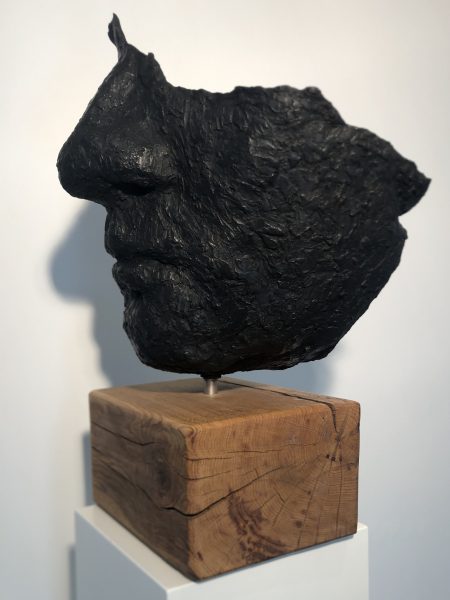
Fragment LXIII

“Psyche XII”
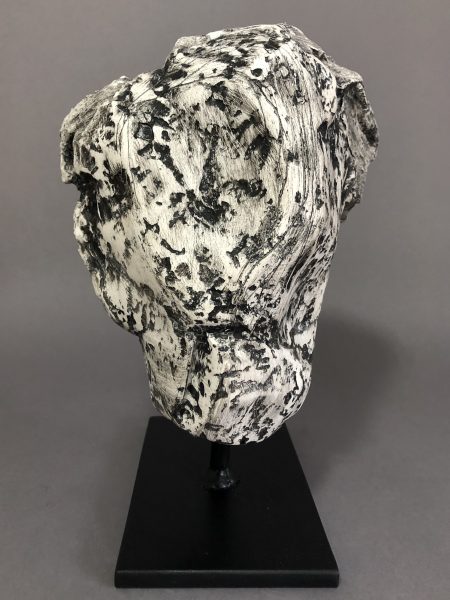
“Psyche XI”
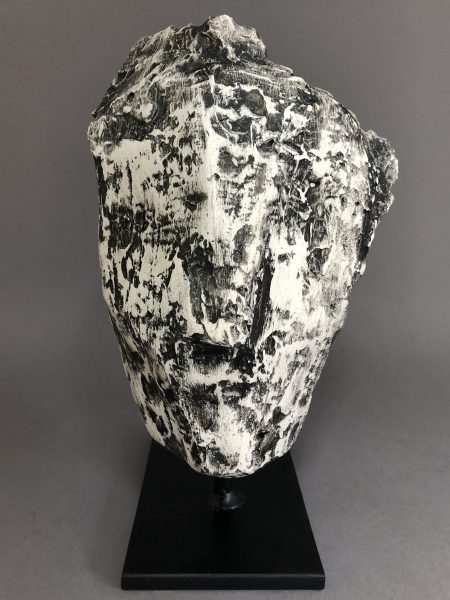
“Psyche X”
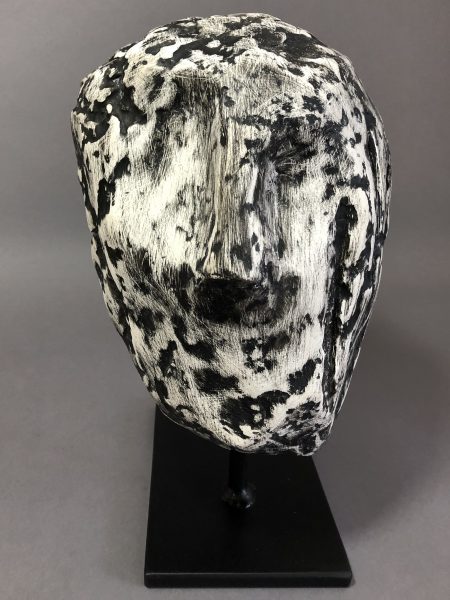
Fragment LVIII
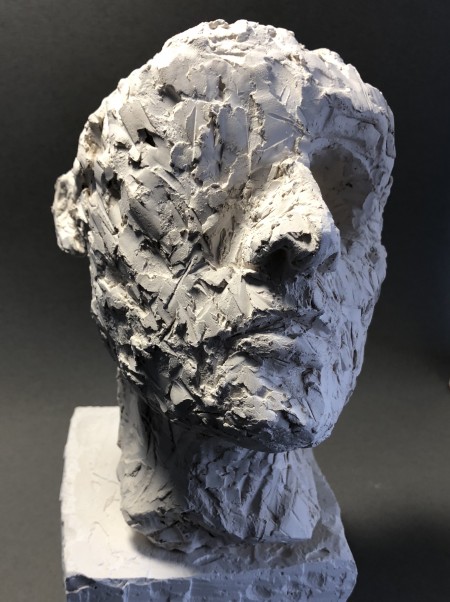
Fragment LVII
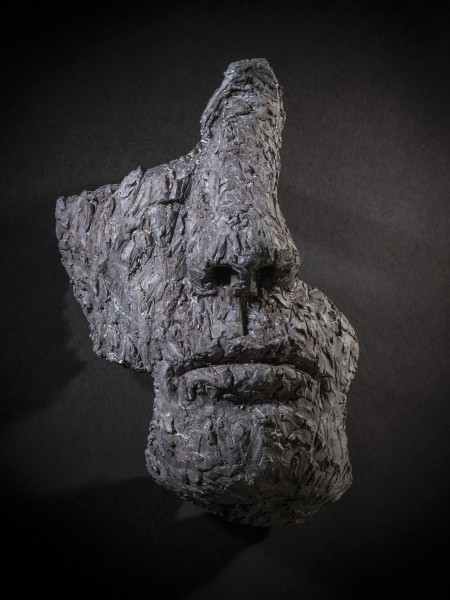
Fragment LVI

Fragment LIII
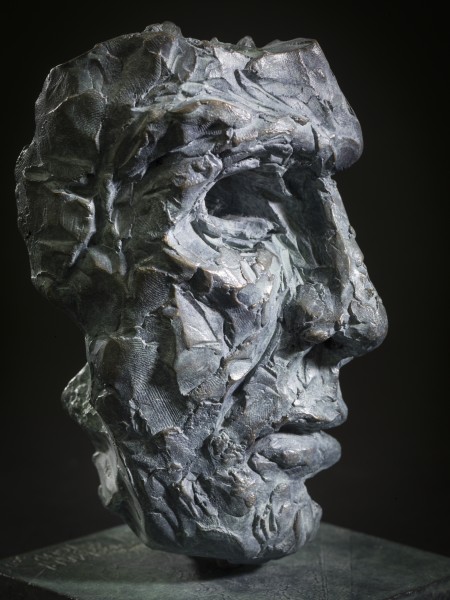
Fragment XLIV
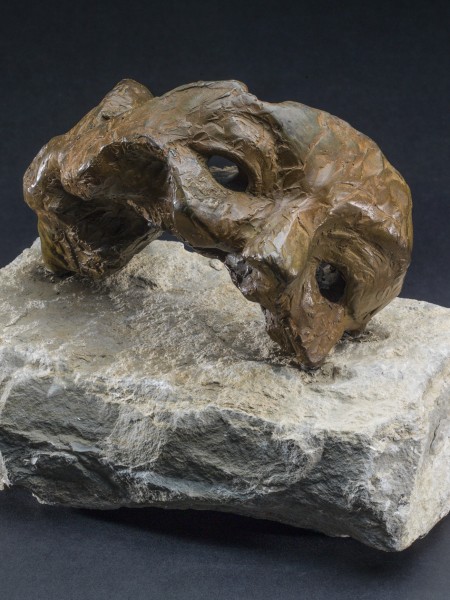
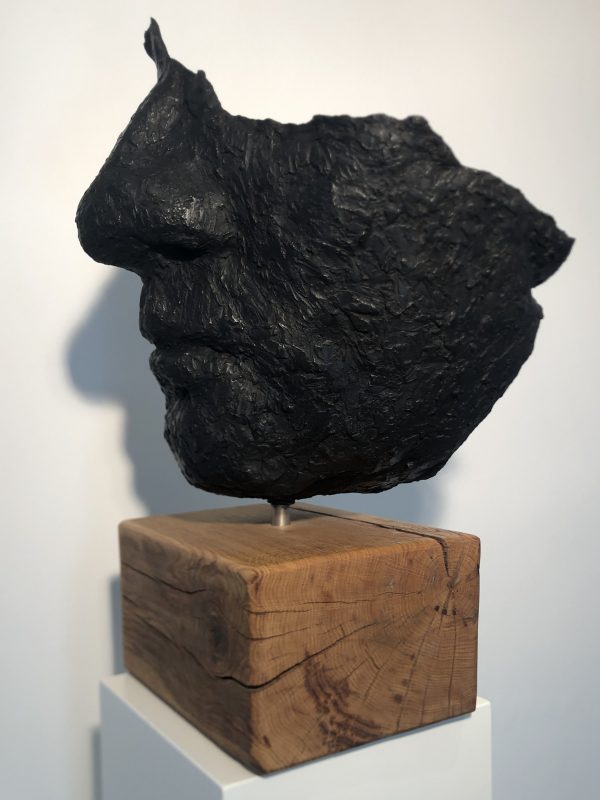
Fragment LXII
Fragment LXII, Bronze on Reclaimed Oak, 67cm High, Edition 1 of 3
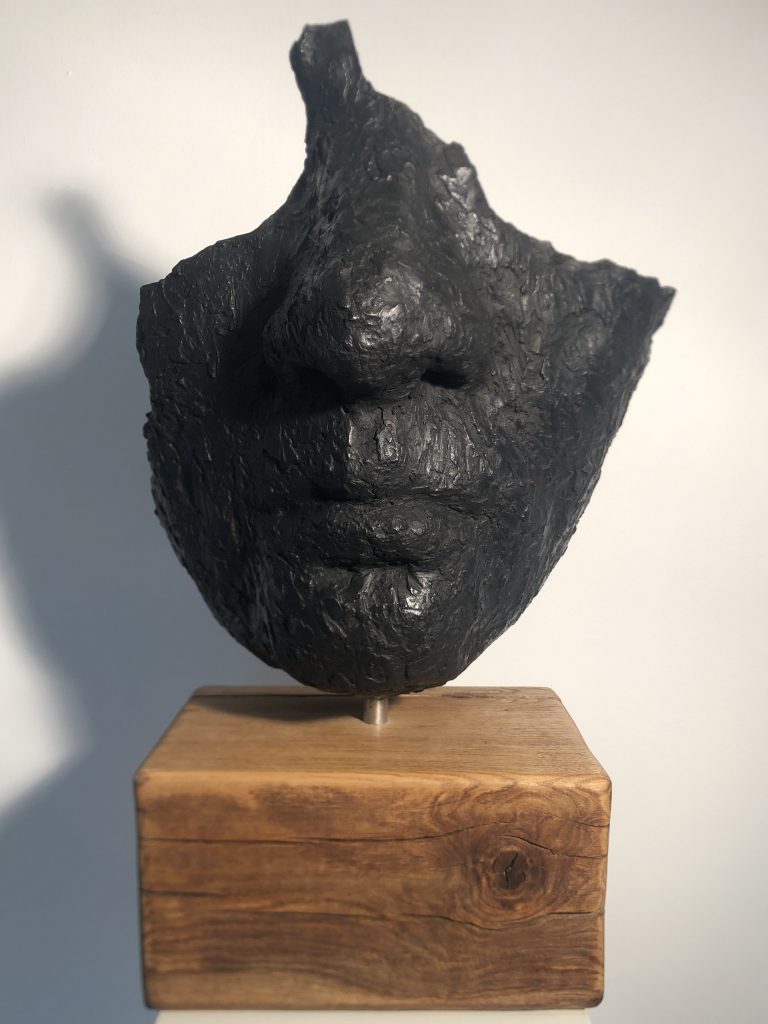
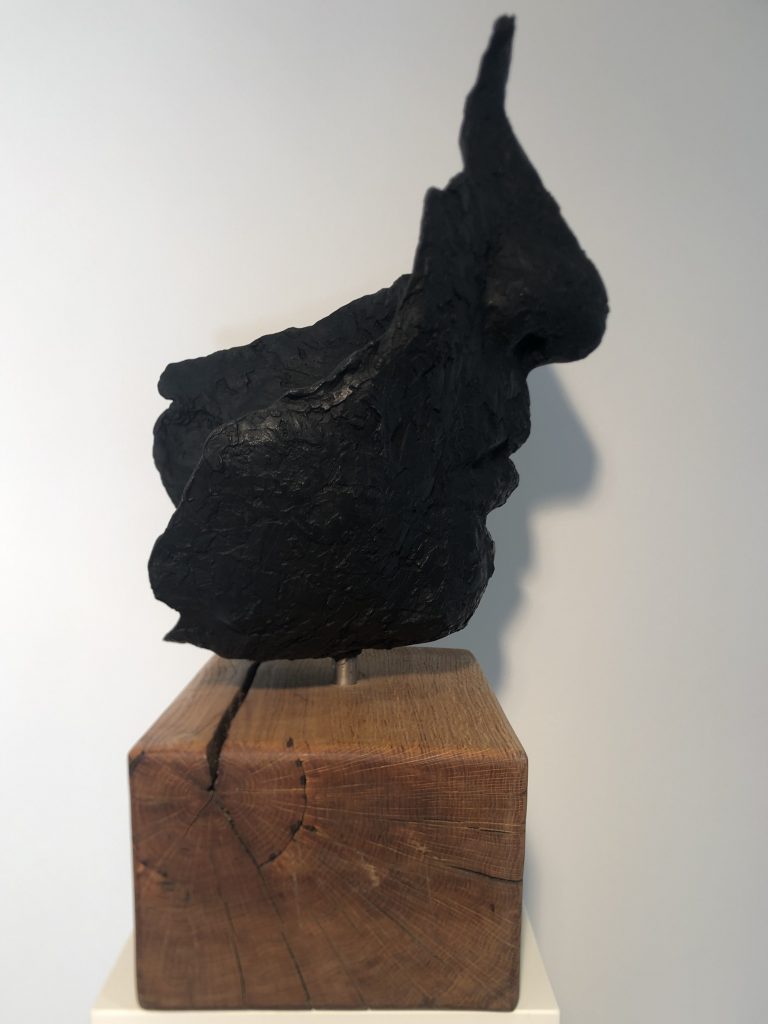
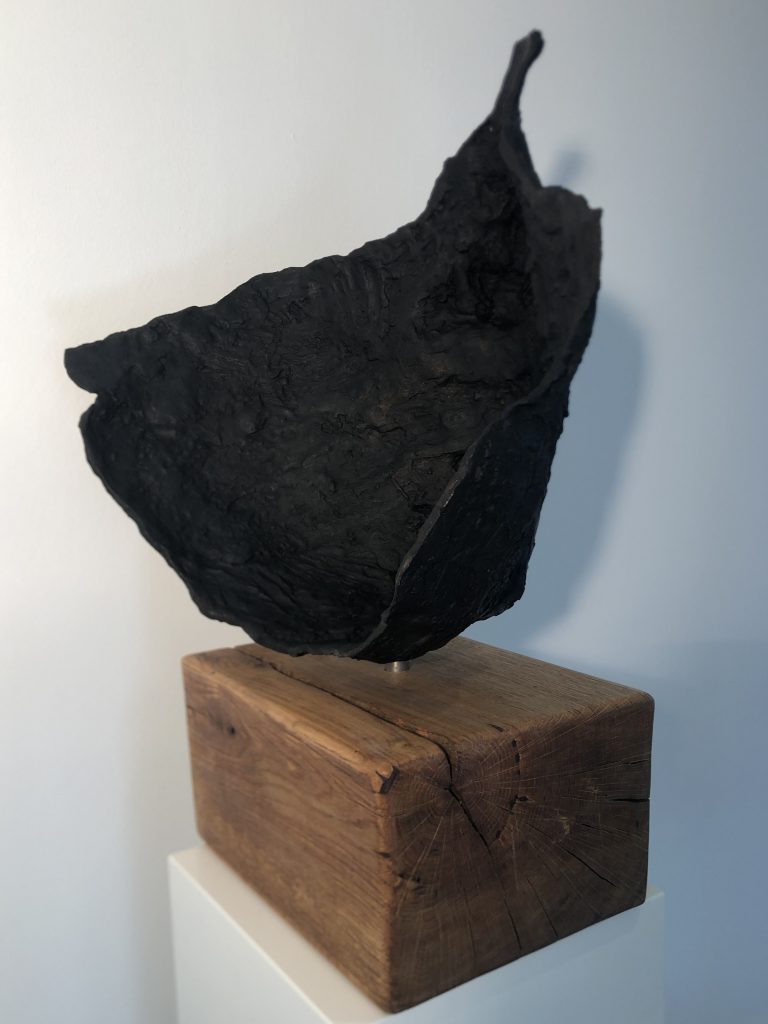

Fragment LXIII
Fragment LXIII, Bronze on Reclaimed Oak, 102cm High, Edition 1 of 3
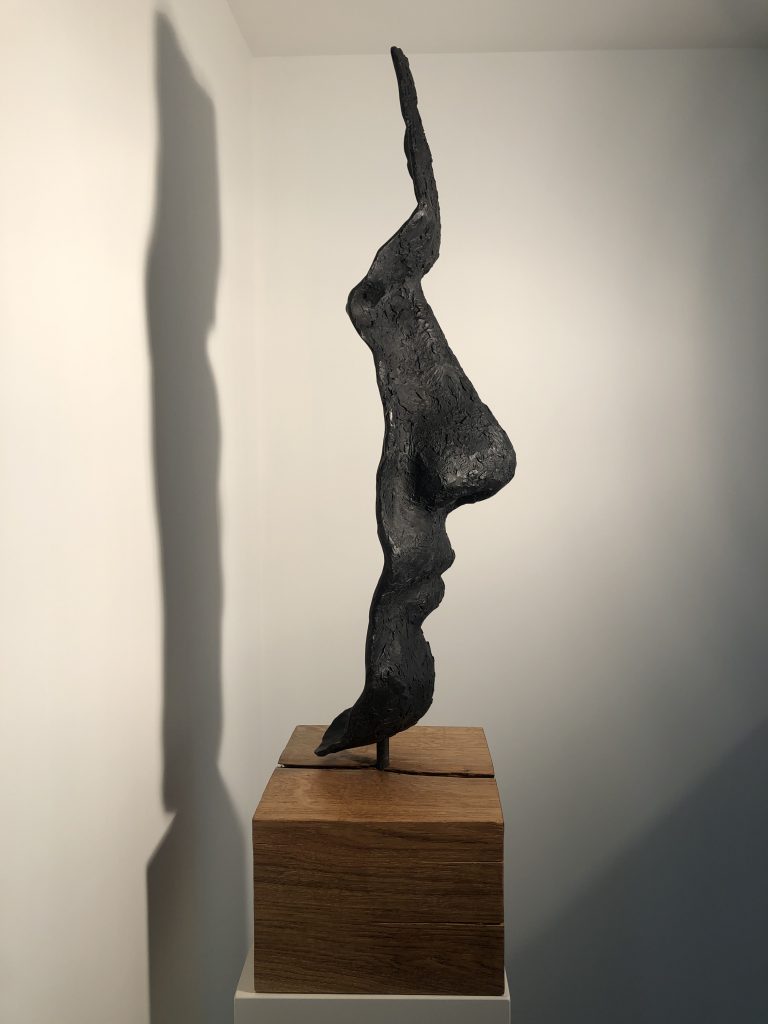
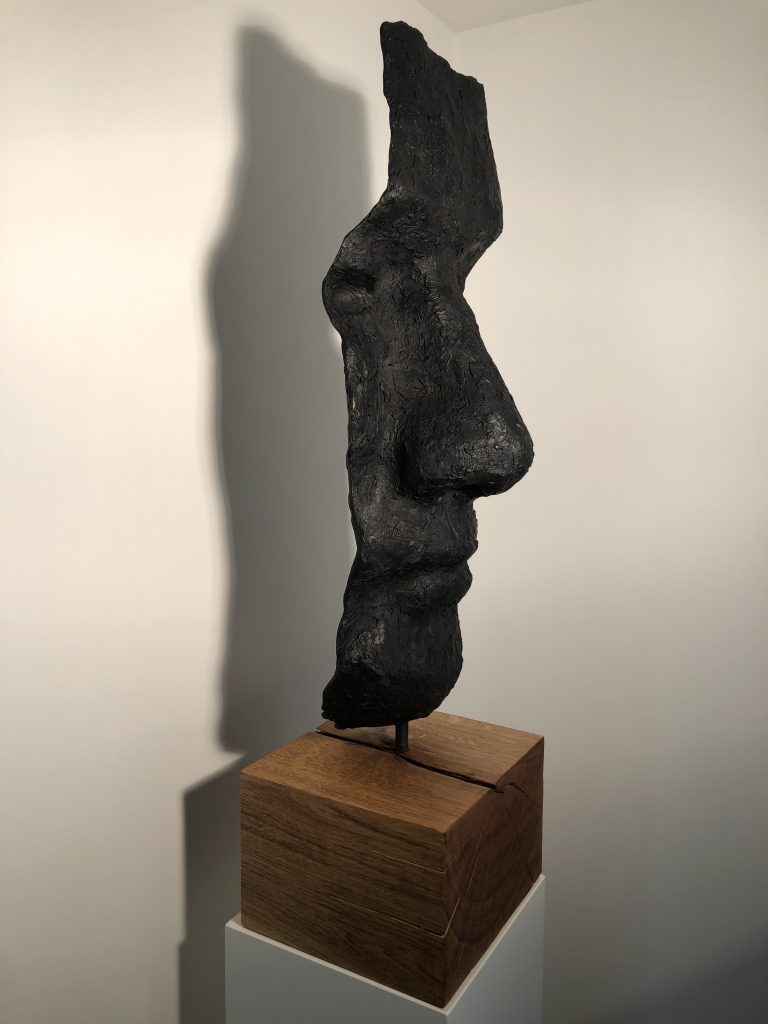
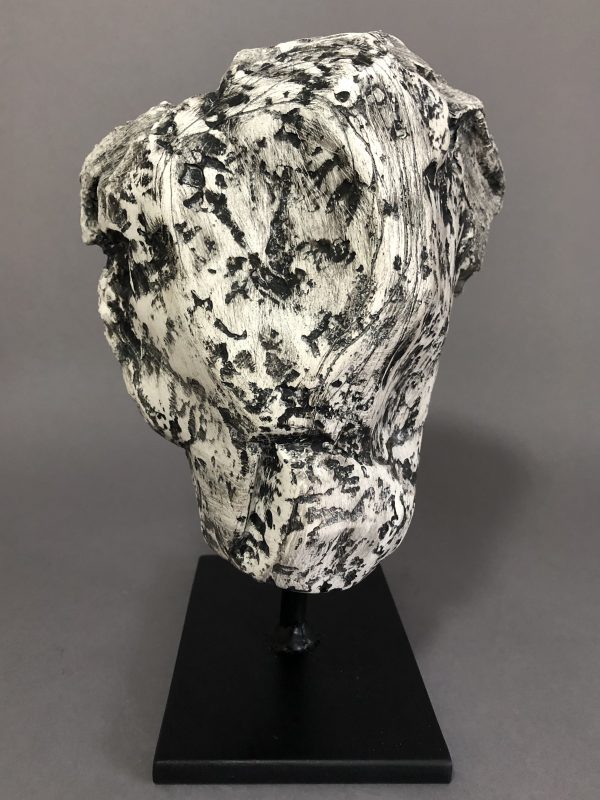
“Psyche XII”
“Psyche XII” – Plaster on steel base, 28cm high.
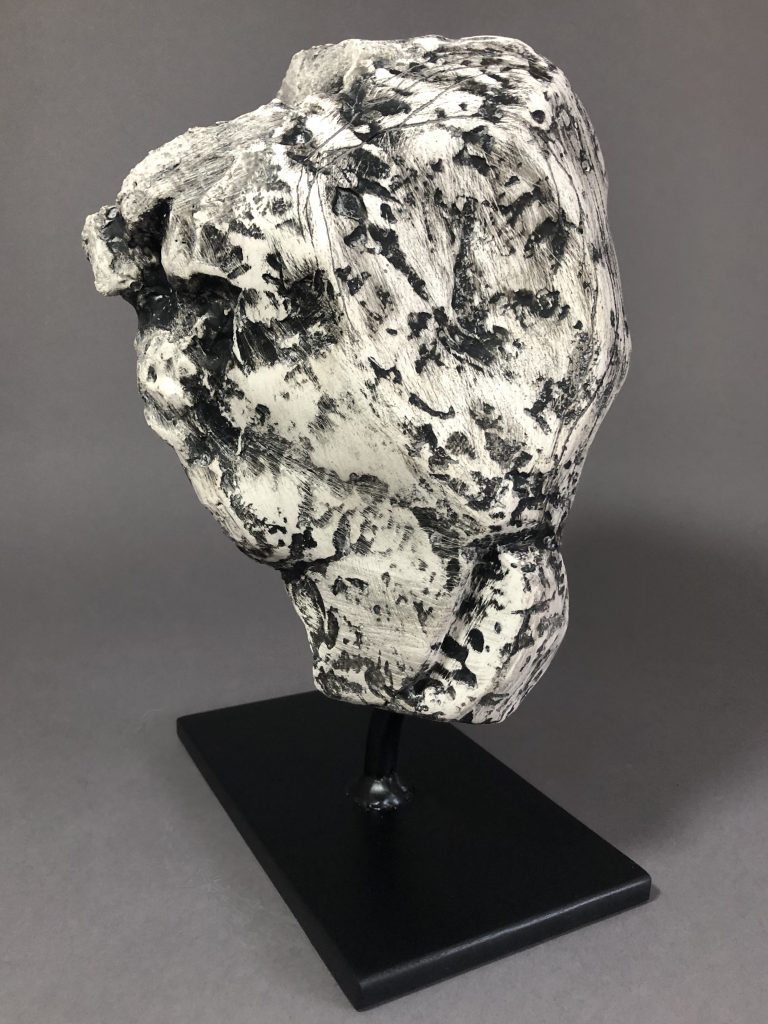
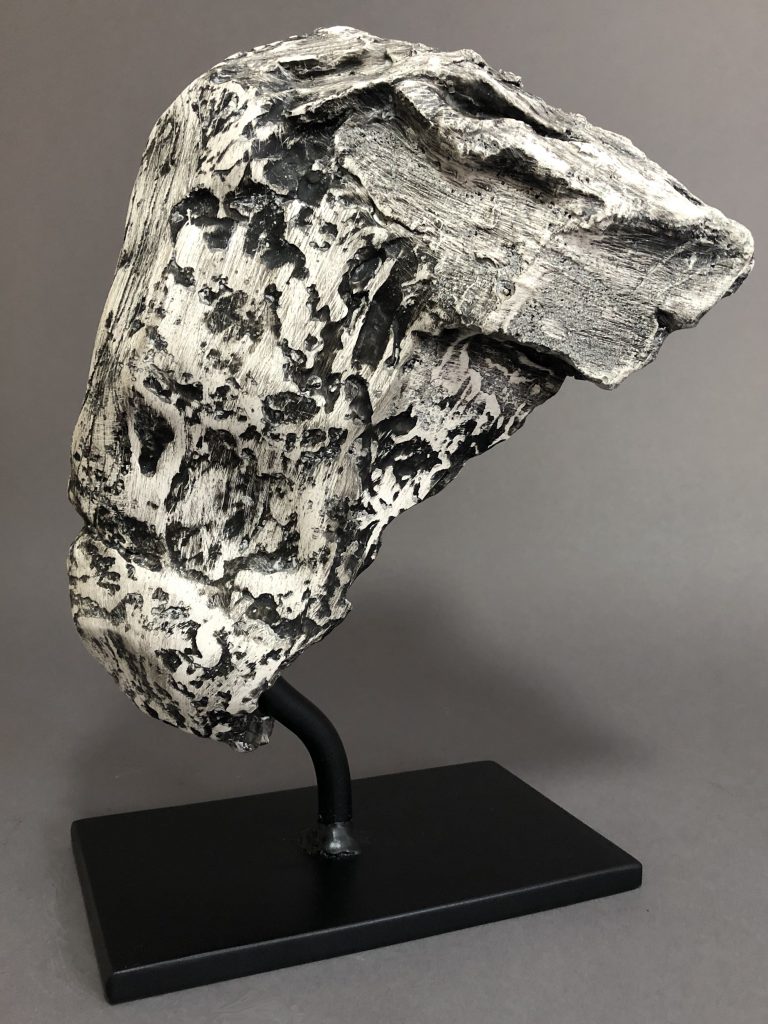
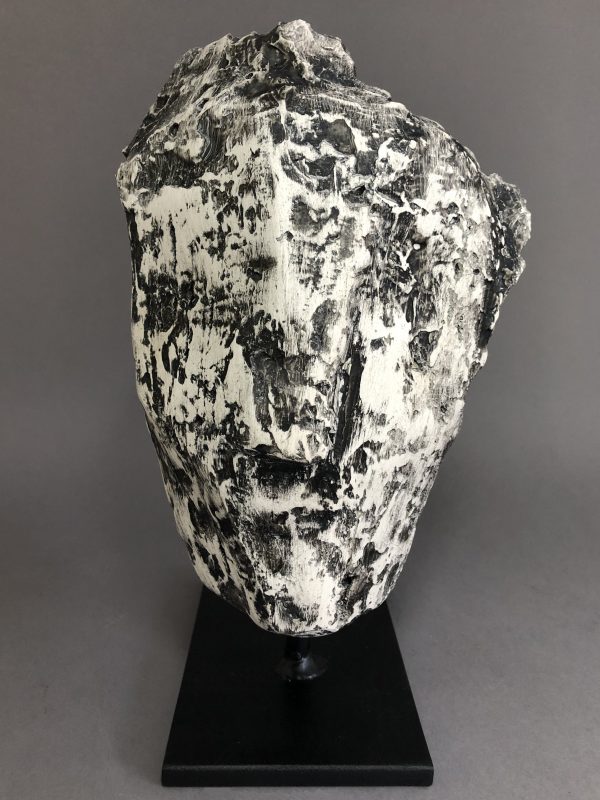
“Psyche XI”
“Psyche XI” – Plaster on steel base, 30cm high.
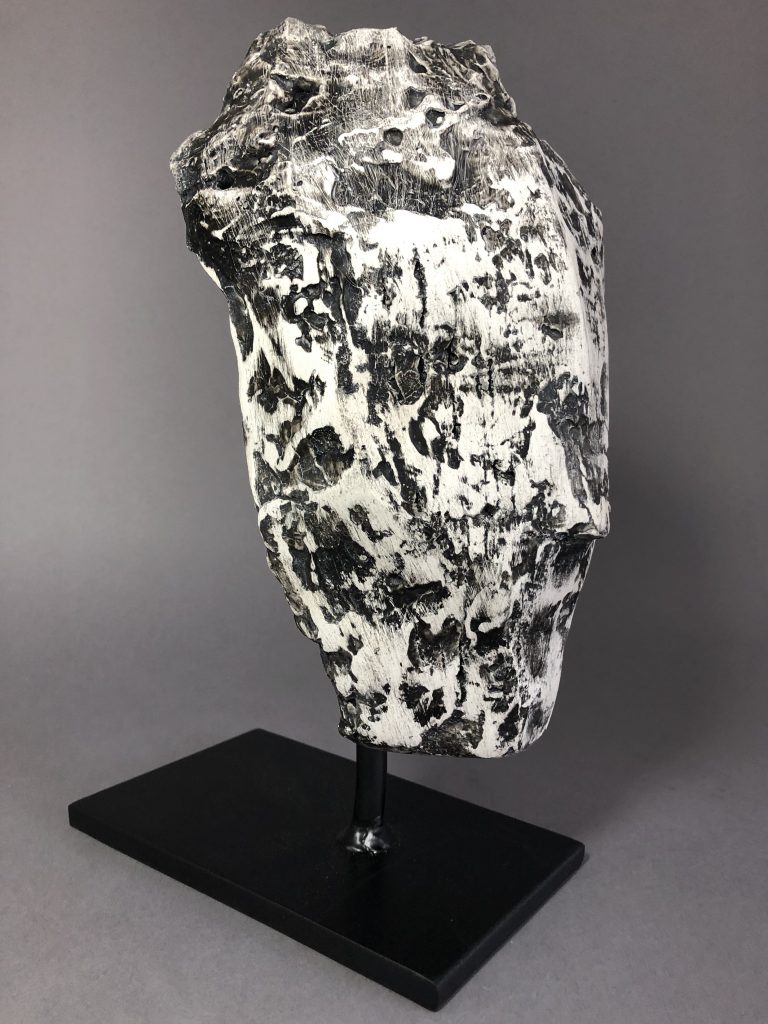
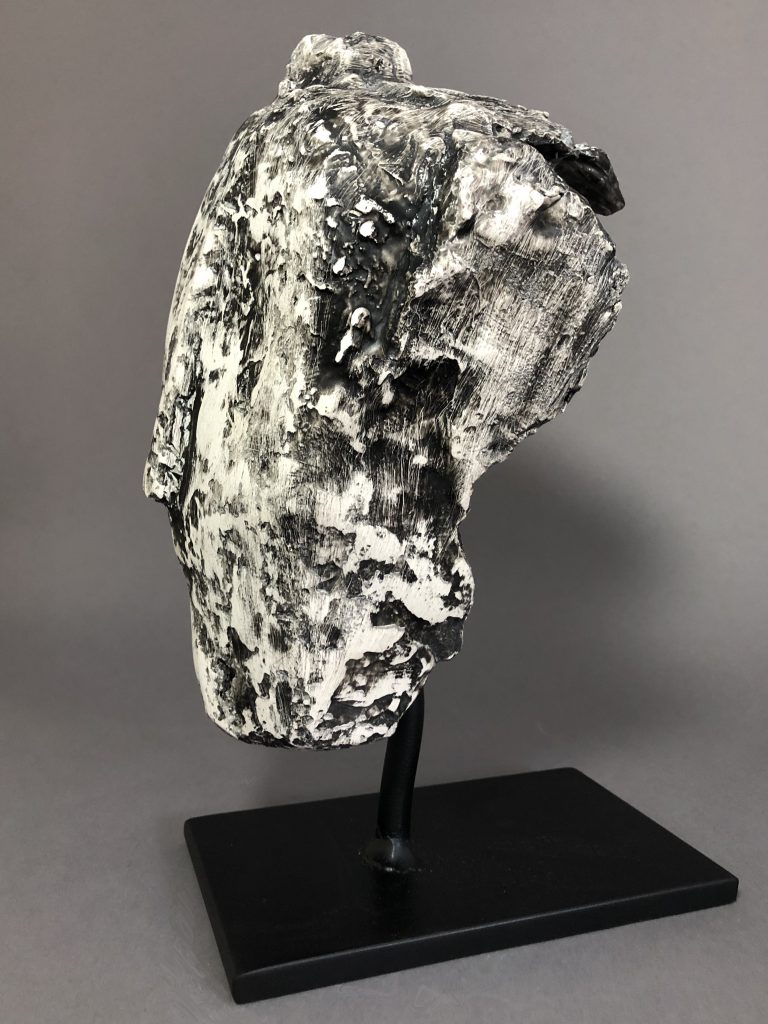
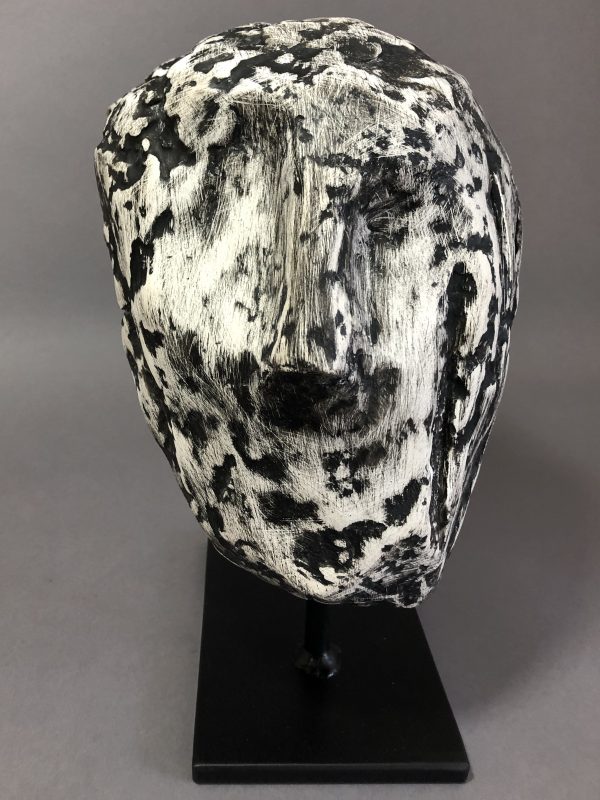
“Psyche X”
“Psyche X” – Plaster on steel base, 30cm high.

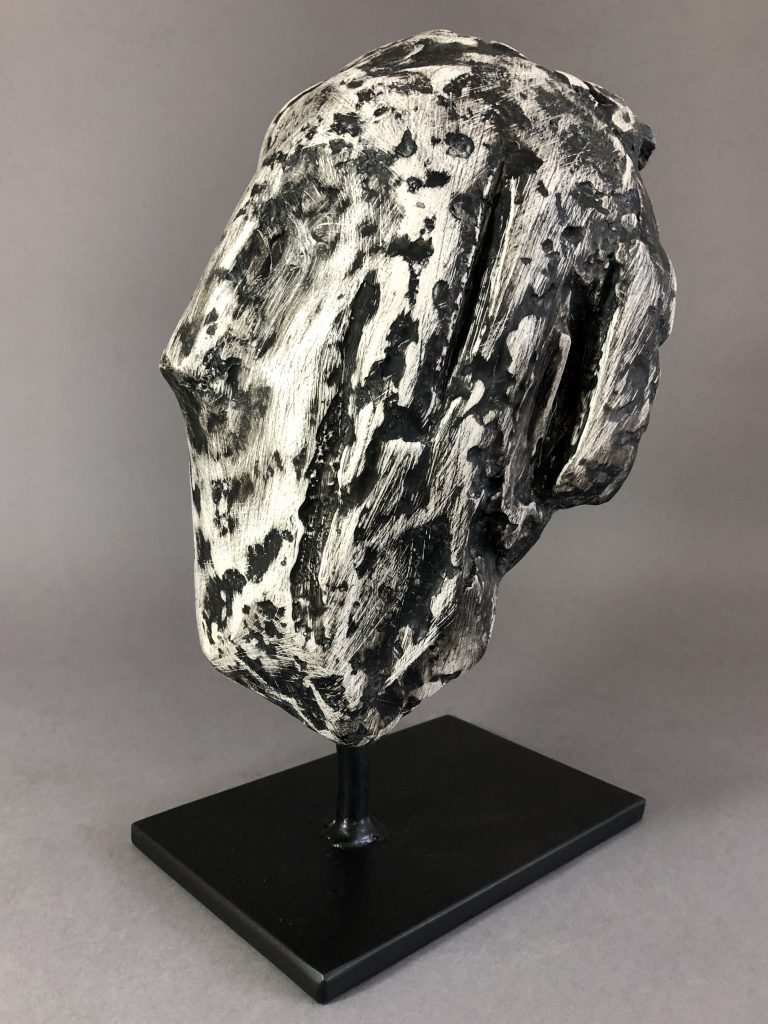
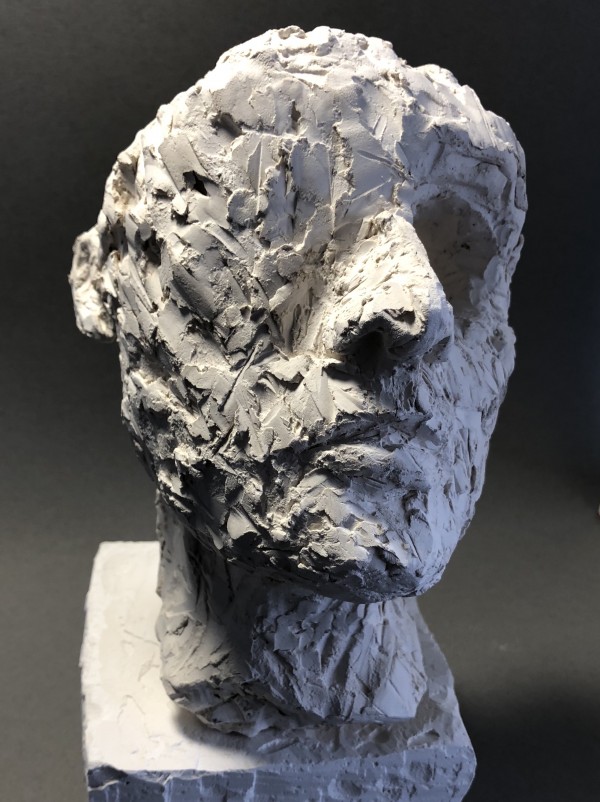
Fragment LVIII
“Fragment LVIII” – Plaster, steel rod, 25 cm high.
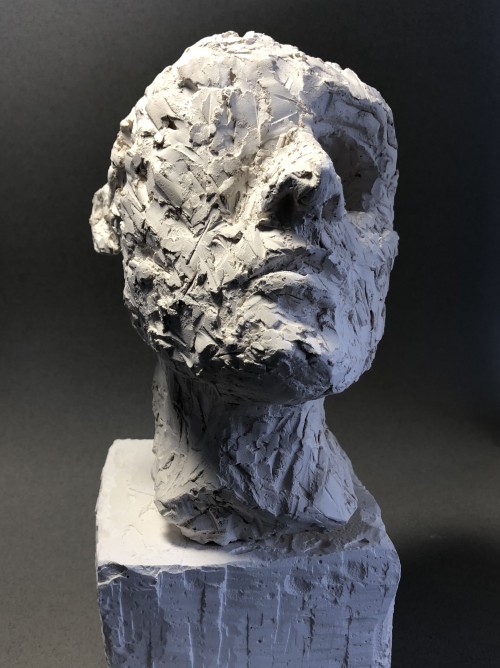
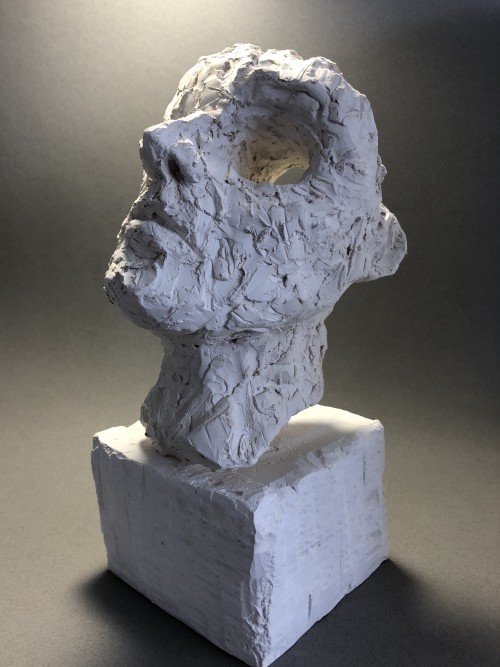
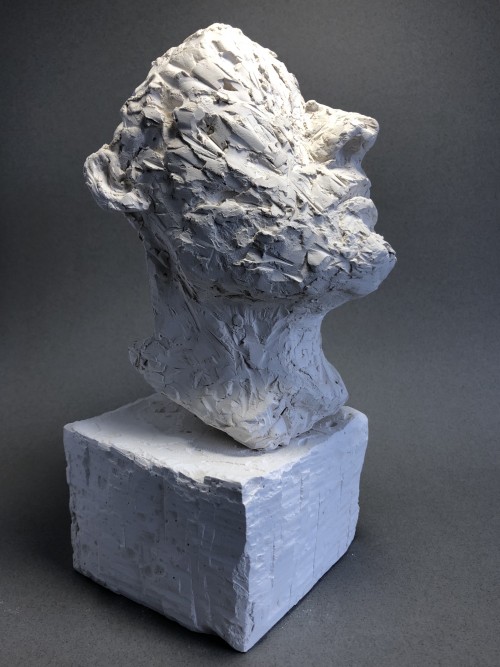
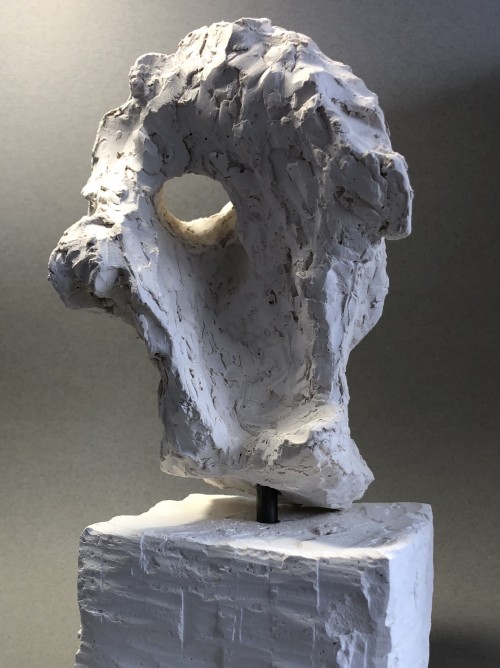
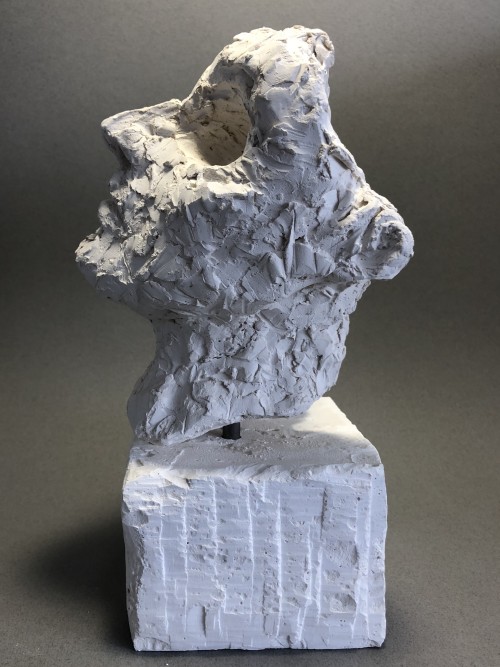
The Fragments series attempts, by the deconstruction of the portrait, to explore what lies beyond the physical and the individual, to discover what is essentially and universally human.
If we strip-away all that is unnecessary for our existence we would be left with nothing but the earth we stand on, and so the landscape is an integral part of this work. From the textures of rock and bark and the restricted palette of earth colours, to the vigorous technique of scraping the painted and sculpted surface with sandpaper and knives calling to mind the processes of erosion and corrosion, these figures are inseparable from their environment.
I’m not a traditional portrait artist, I’m not trying to describe a certain person, rather I’m interested in humanity in general, therefore very few of my paintings and sculptures include eyes, which would immediately tie the work to an individual.
The portrait is further abstracted, sometimes with a sense of fluidity, examining the effect of motion on the face, other times in a geometric fashion, suggestive of the broken reclics of ancient civilisations. However, by ensuring that the subject has a sense of volume, weight and substance, I hope that what is revealed by deconstructing the portrait might be just as tangible.
The viewer is encouraged to look beyond the surface features, to continue the process of stripping-away the unnecessary and consider ideas of mental health, identity, spirituality, the soul and our connection with the earth. The fragmentation of the portrait is sometimes uncomfortable because it deals with the fragility of existence.
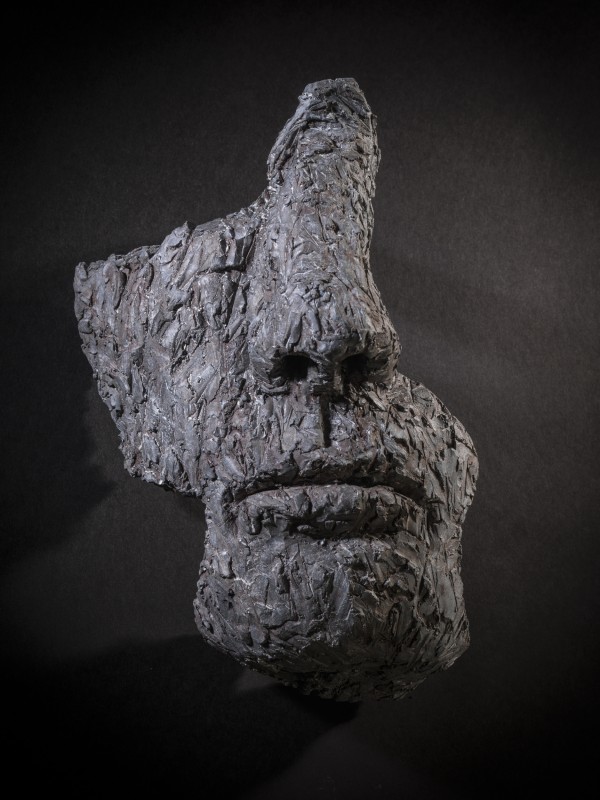
Fragment LVII
“Fragment LVII” – Jesmonite, 27 cm long, unique edition.
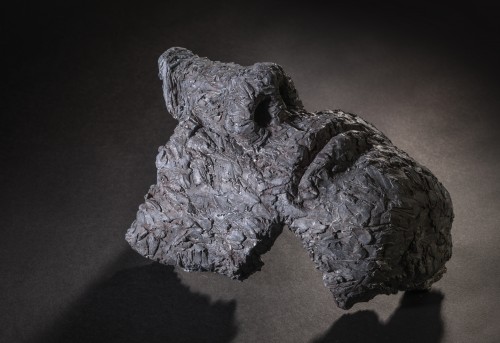
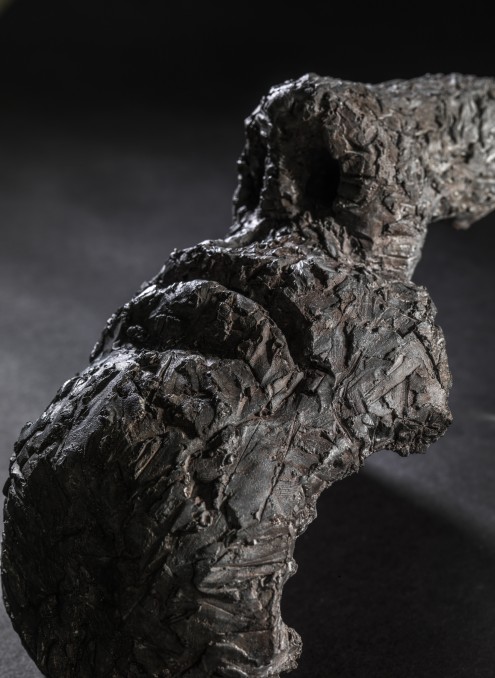
The Fragments series attempts, by the deconstruction of the portrait, to explore what lies beyond the physical and the individual, to discover what is essentially and universally human.
If we strip-away all that is unnecessary for our existence we would be left with nothing but the earth we stand on, and so the landscape is an integral part of this work. From the textures of rock and bark and the restricted palette of earth colours, to the vigorous technique of scraping the painted and sculpted surface with sandpaper and knives calling to mind the processes of erosion and corrosion, these figures are inseparable from their environment.
I’m not a traditional portrait artist, I’m not trying to describe a certain person, rather I’m interested in humanity in general, therefore very few of my paintings and sculptures include eyes, which would immediately tie the work to an individual.
The portrait is further abstracted, sometimes with a sense of fluidity, examining the effect of motion on the face, other times in a geometric fashion, suggestive of the broken reclics of ancient civilisations. However, by ensuring that the subject has a sense of volume, weight and substance, I hope that what is revealed by deconstructing the portrait might be just as tangible.
The viewer is encouraged to look beyond the surface features, to continue the process of stripping-away the unnecessary and consider ideas of mental health, identity, spirituality, the soul and our connection with the earth. The fragmentation of the portrait is sometimes uncomfortable because it deals with the fragility of existence.
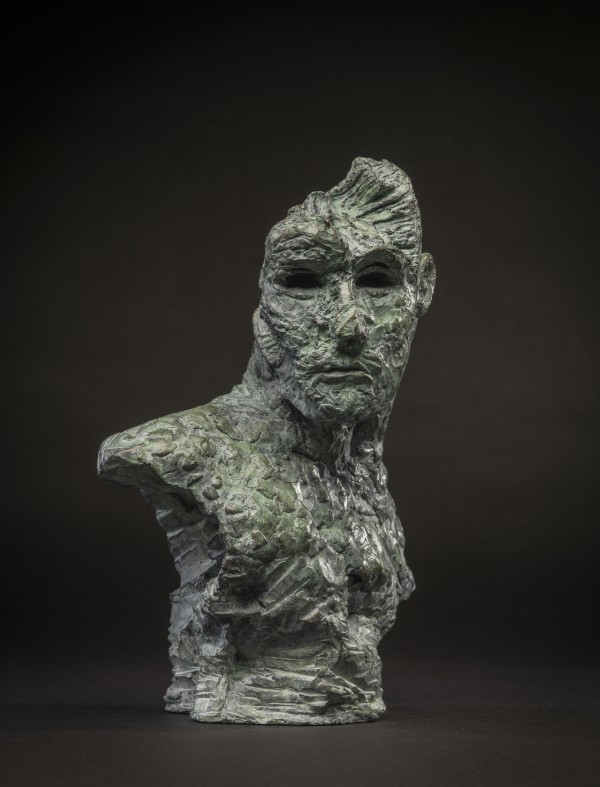
Fragment LVI
“Fragment LVI” – Bronze, 24cm high, edition of 3.
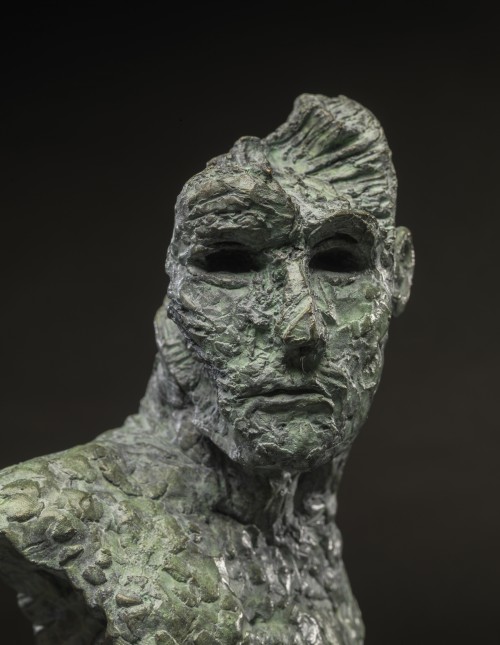
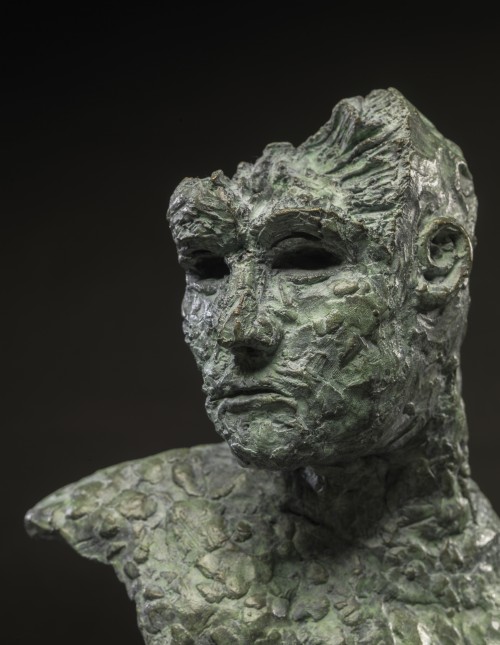
The Fragments series attempts, by the deconstruction of the portrait, to explore what lies beyond the physical and the individual, to discover what is essentially and universally human.
If we strip-away all that is unnecessary for our existence we would be left with nothing but the earth we stand on, and so the landscape is an integral part of this work. From the textures of rock and bark and the restricted palette of earth colours, to the vigorous technique of scraping the painted and sculpted surface with sandpaper and knives calling to mind the processes of erosion and corrosion, these figures are inseparable from their environment.
I’m not a traditional portrait artist, I’m not trying to describe a certain person, rather I’m interested in humanity in general, therefore very few of my paintings and sculptures include eyes, which would immediately tie the work to an individual.
The portrait is further abstracted, sometimes with a sense of fluidity, examining the effect of motion on the face, other times in a geometric fashion, suggestive of the broken reclics of ancient civilisations. However, by ensuring that the subject has a sense of volume, weight and substance, I hope that what is revealed by deconstructing the portrait might be just as tangible.
The viewer is encouraged to look beyond the surface features, to continue the process of stripping-away the unnecessary and consider ideas of mental health, identity, spirituality, the soul and our connection with the earth. The fragmentation of the portrait is sometimes uncomfortable because it deals with the fragility of existence.
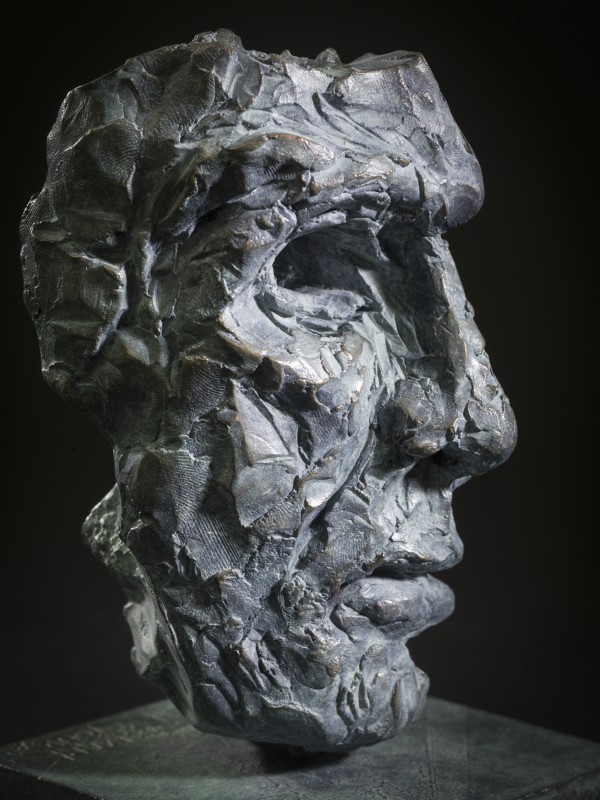
Fragment LIII
“Fragment LIII” – Bronze, 16cm high, edition of 3.
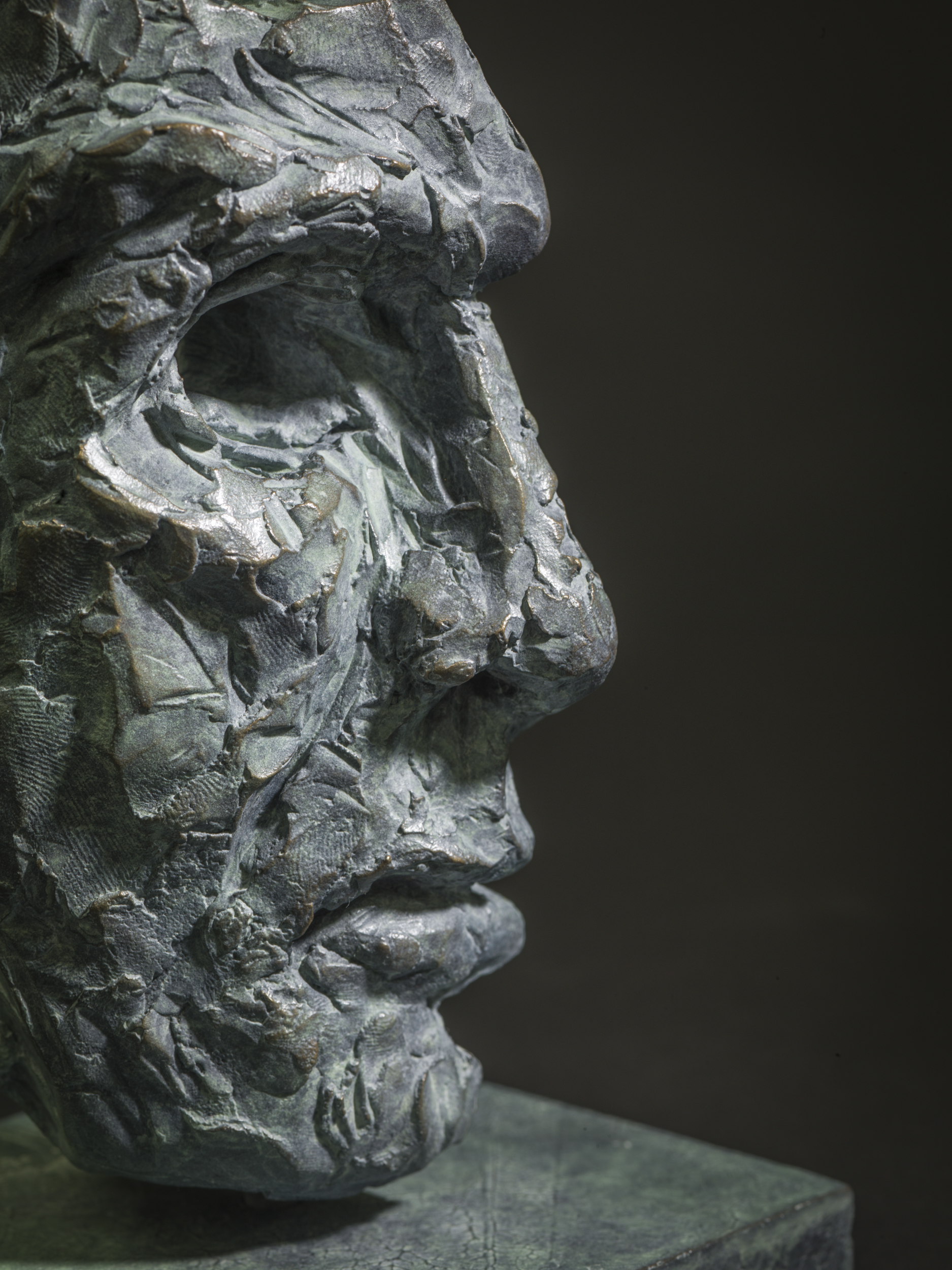
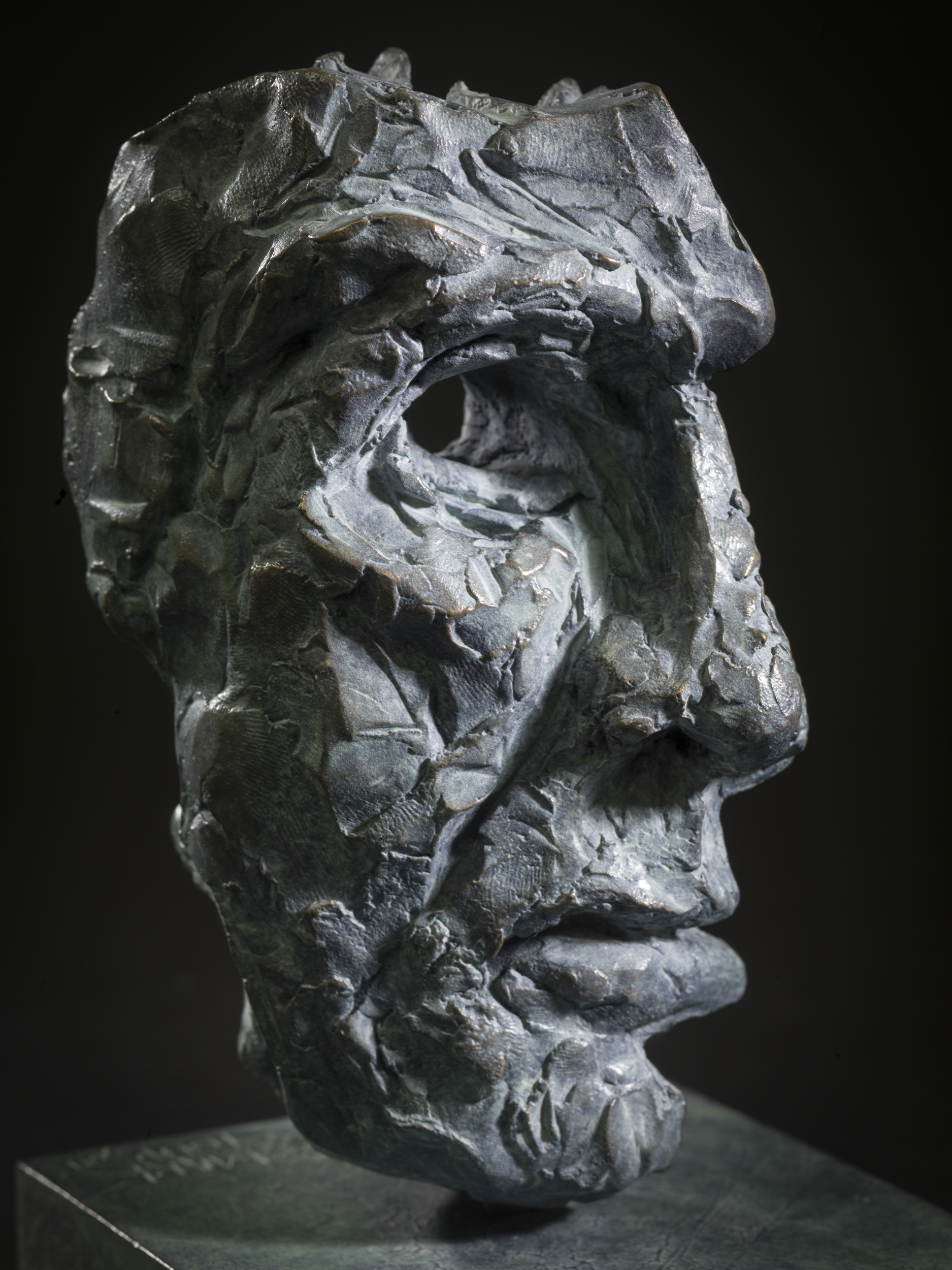
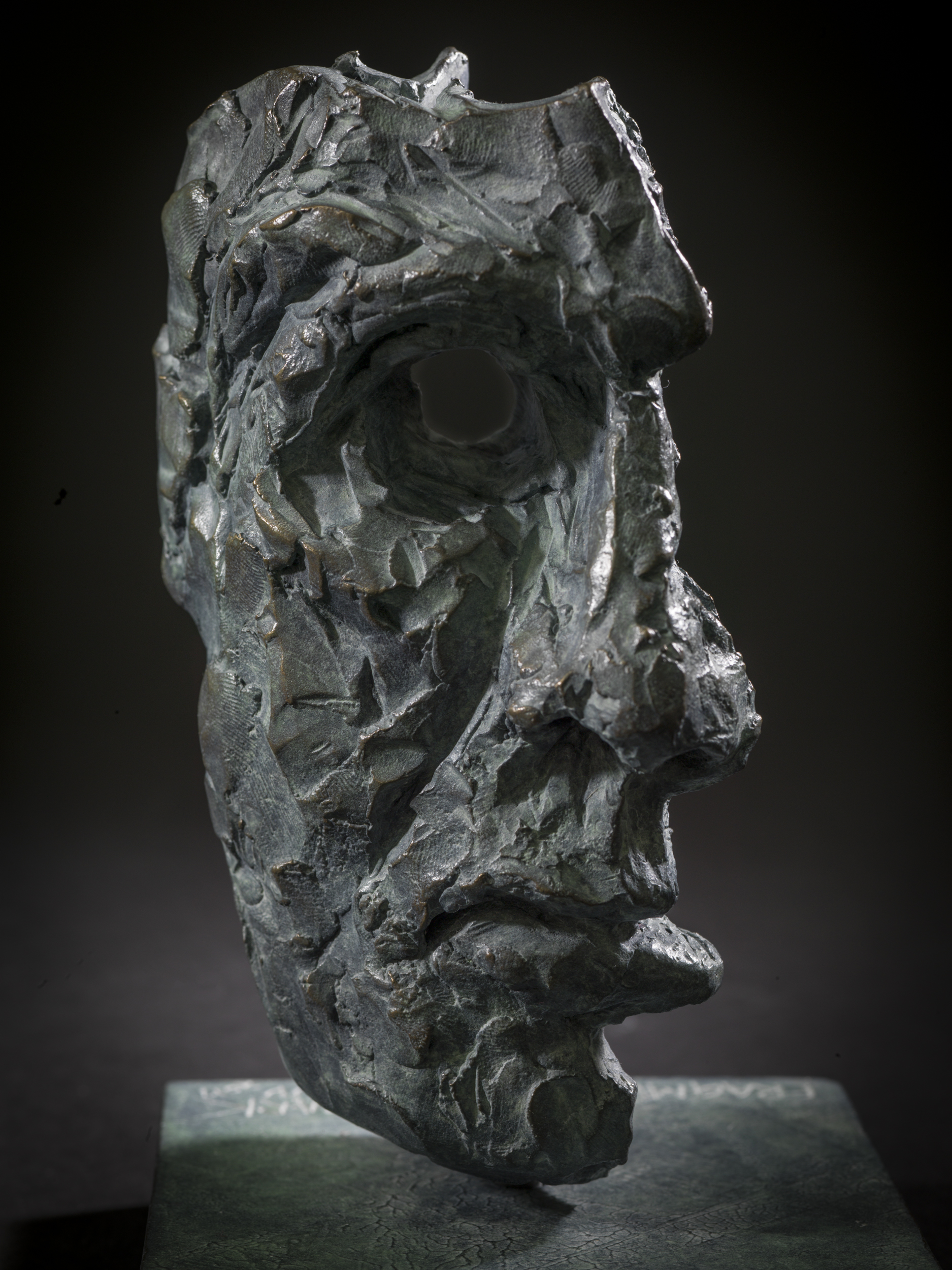
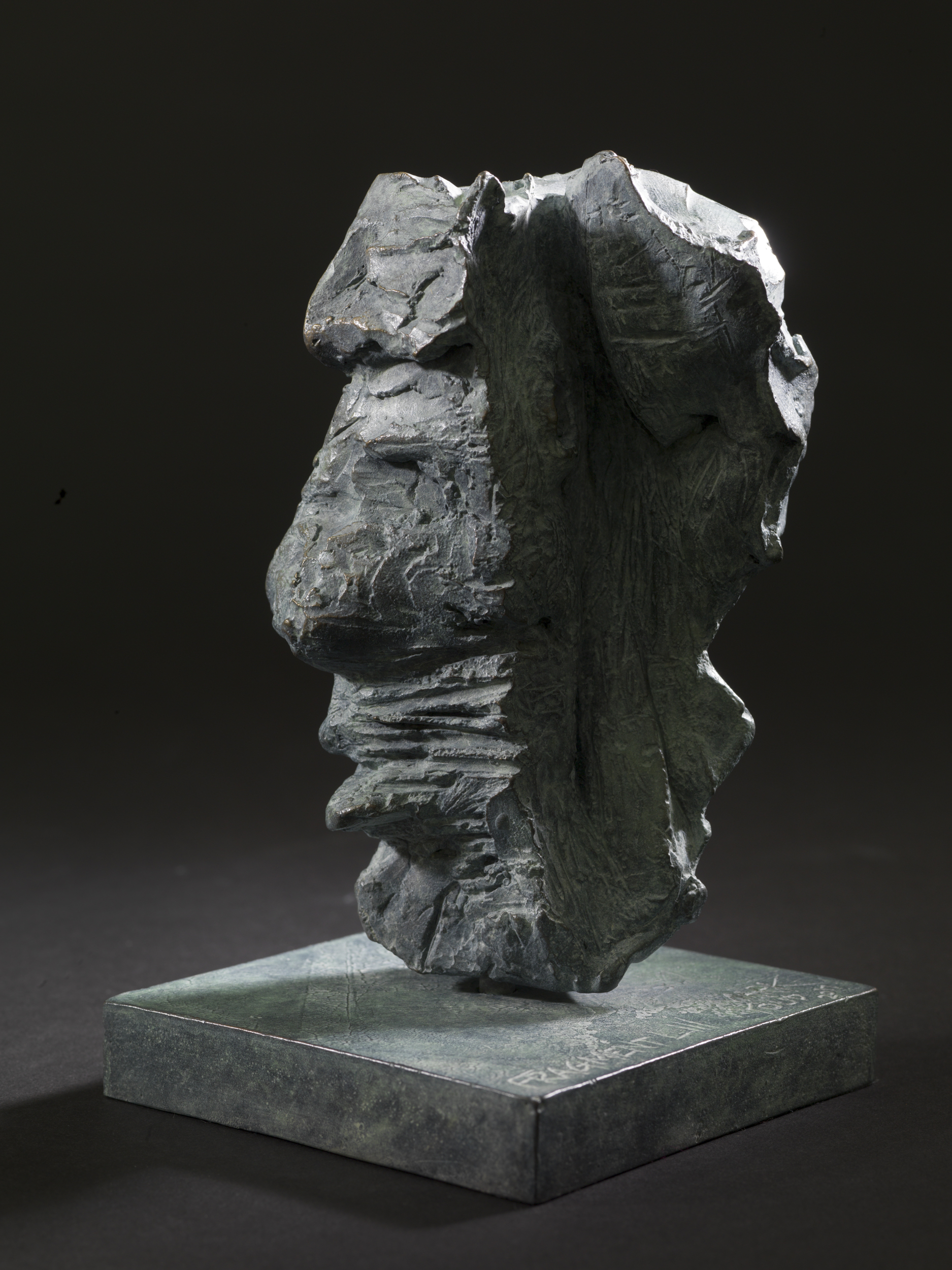
Fragment LIII, bronze 16cm high and new 32cm enlargement available now.
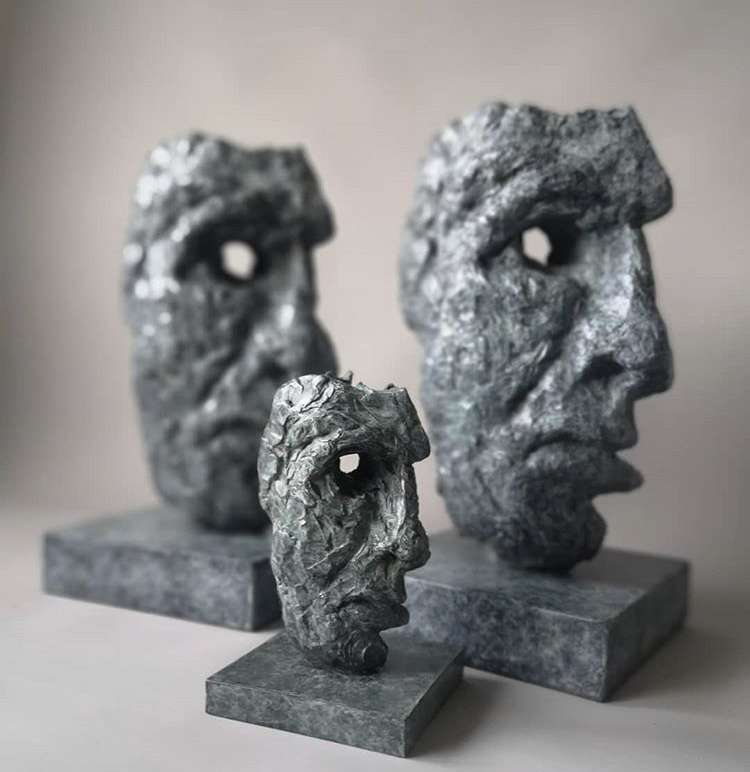
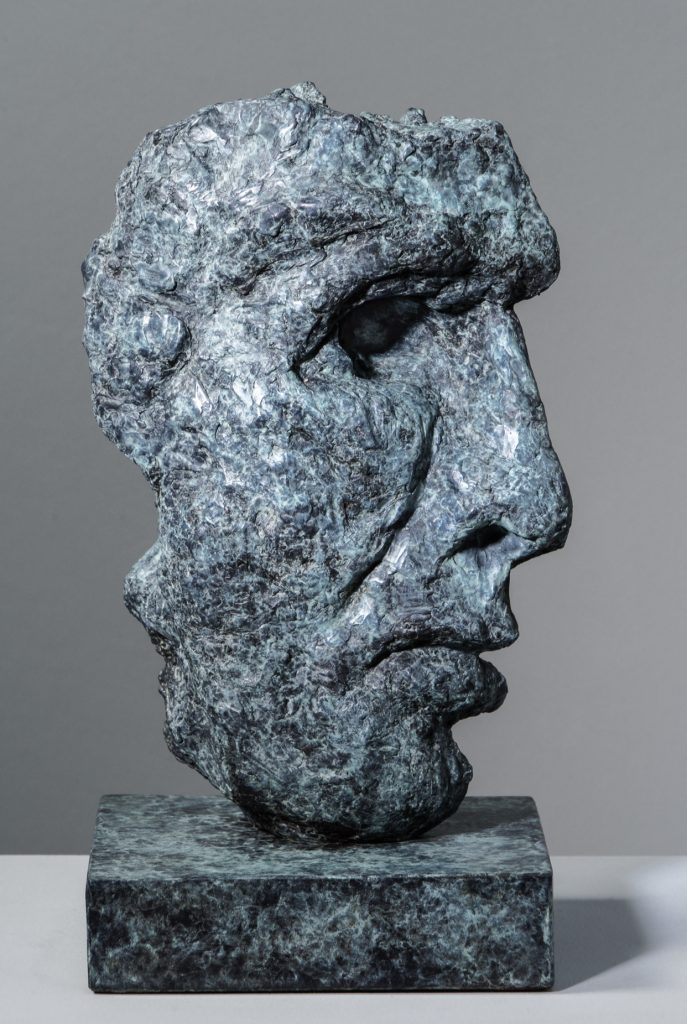
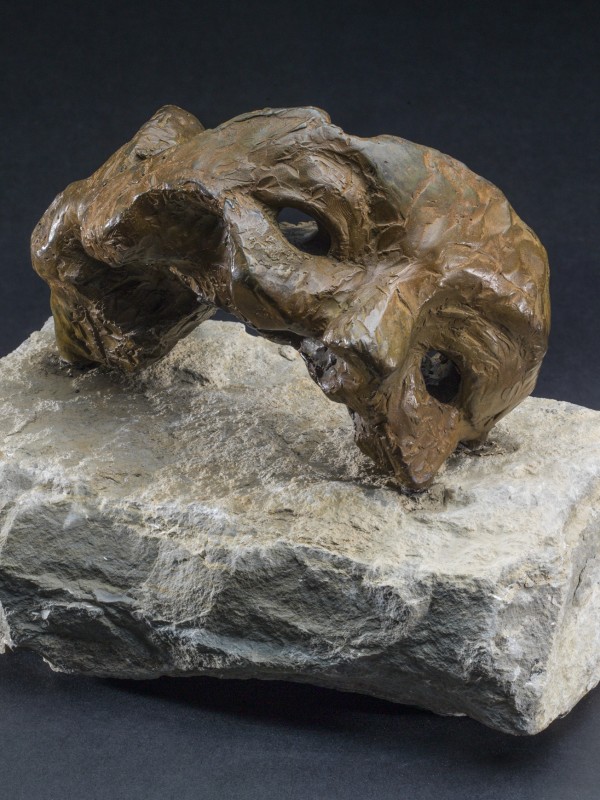
Fragment XLIV
“Fragment XLIV” – Bronze & Limestone, 20cm long, edition of 3.
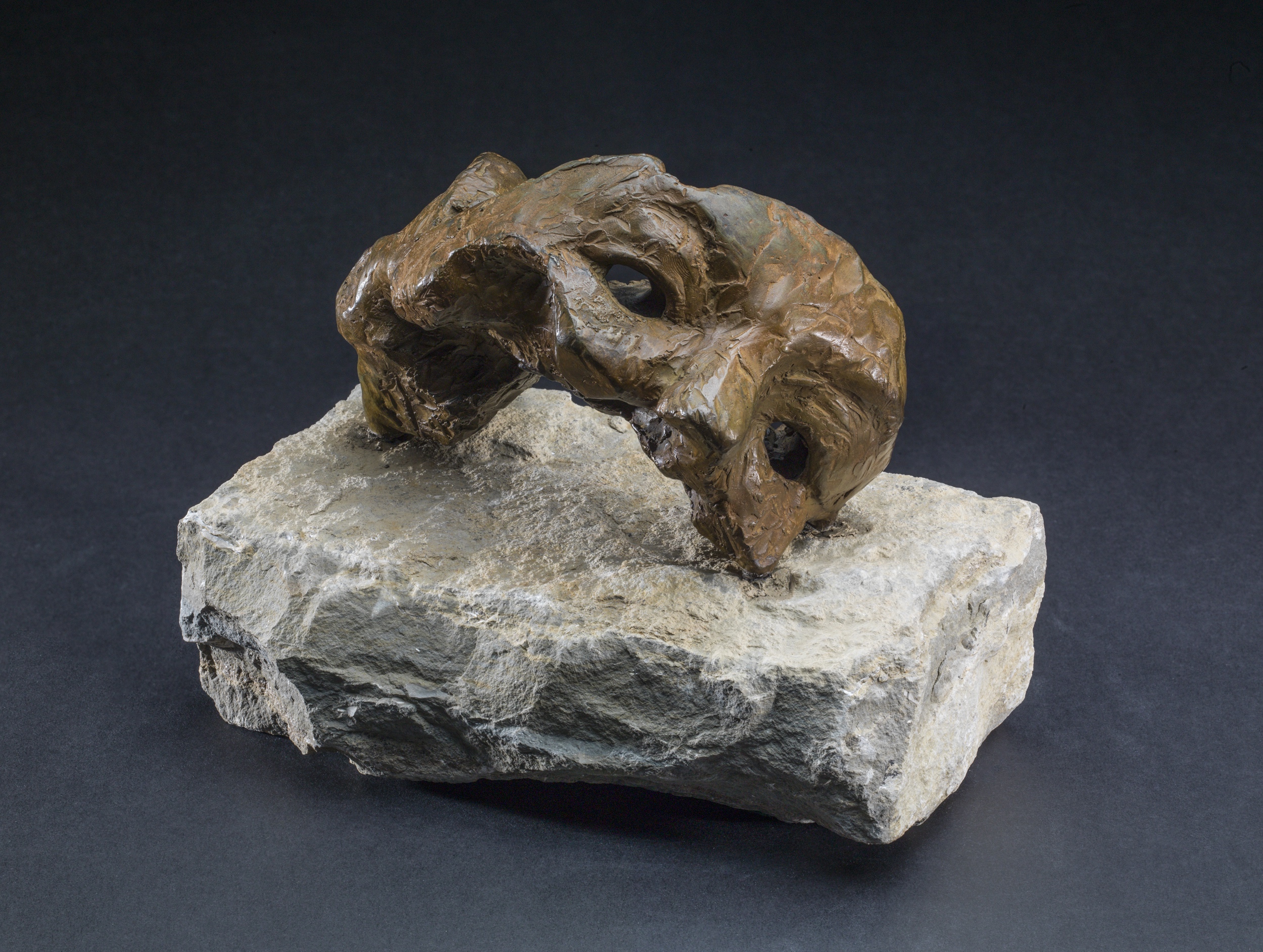
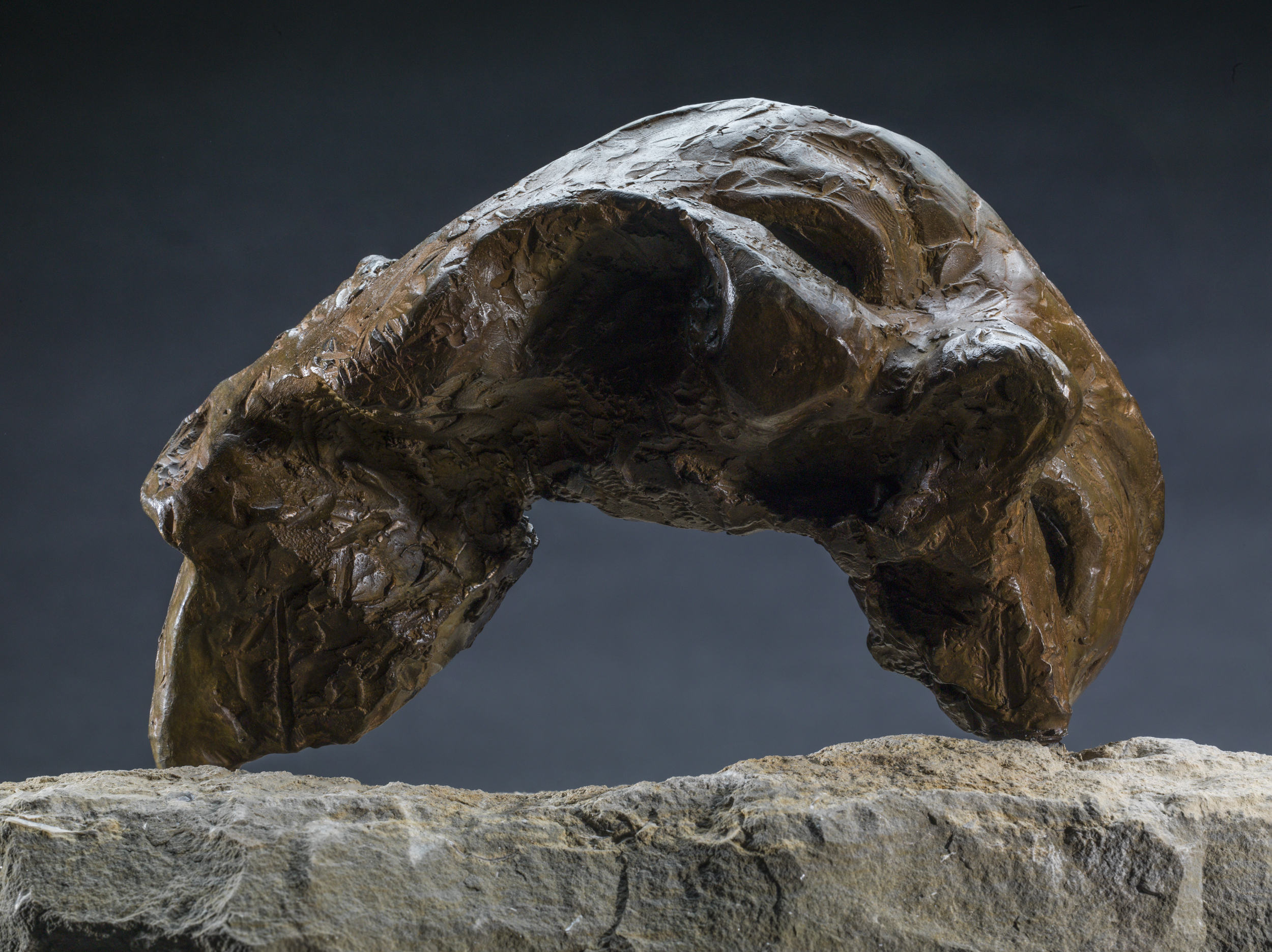
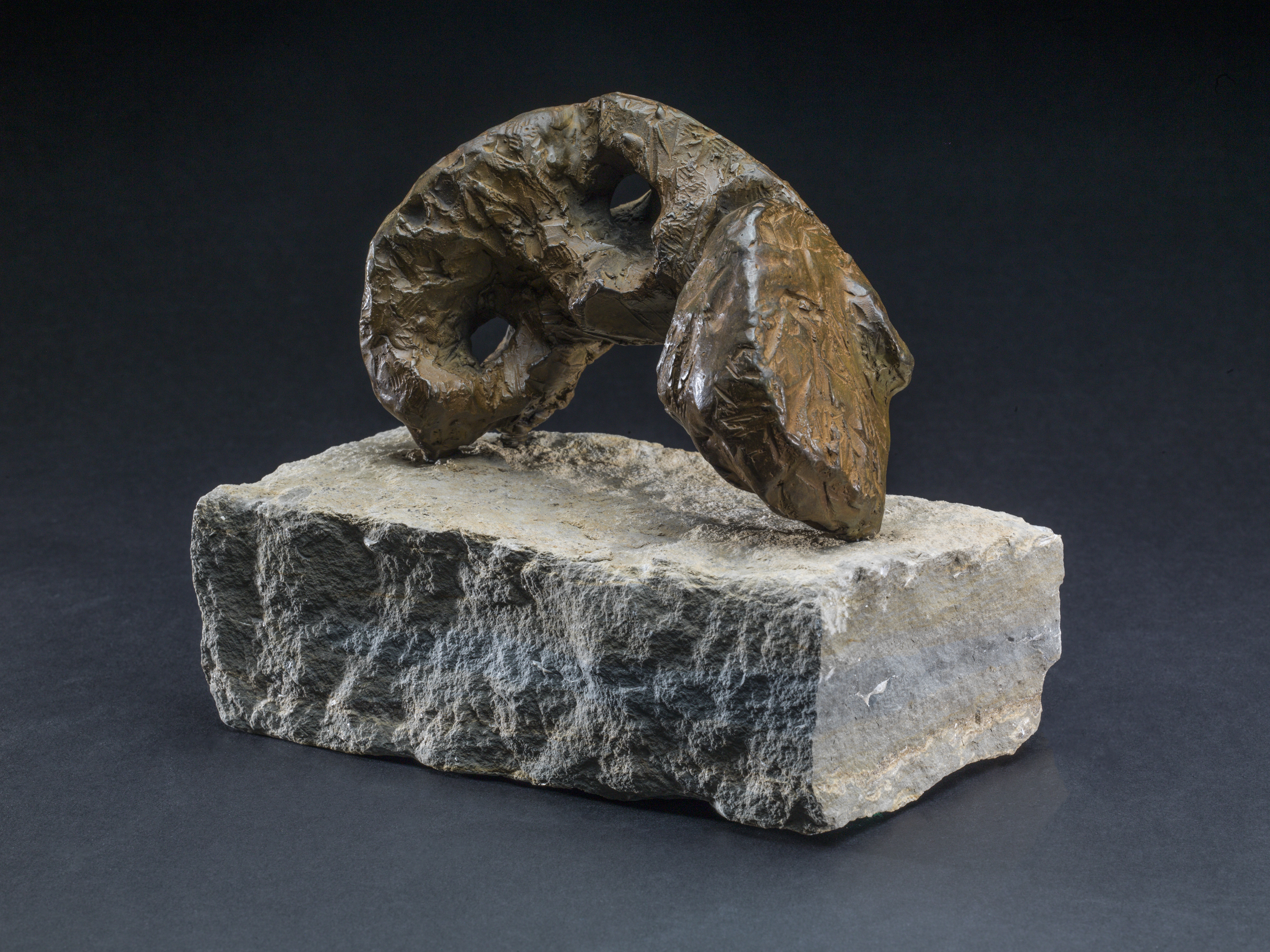
The Fragments series attempts, by the deconstruction of the portrait, to explore what lies beyond the physical and the individual, to discover what is essentially and universally human.
If we strip-away all that is unnecessary for our existence we would be left with nothing but the earth we stand on, and so the landscape is an integral part of this work. From the textures of rock and bark and the restricted palette of earth colours, to the vigorous technique of scraping the painted and sculpted surface with sandpaper and knives calling to mind the processes of erosion and corrosion, these figures are inseparable from their environment.
I’m not a traditional portrait artist, I’m not trying to describe a certain person, rather I’m interested in humanity in general, therefore very few of my paintings and sculptures include eyes, which would immediately tie the work to an individual.
The portrait is further abstracted, sometimes with a sense of fluidity, examining the effect of motion on the face, other times in a geometric fashion, suggestive of the broken reclics of ancient civilisations. However, by ensuring that the subject has a sense of volume, weight and substance, I hope that what is revealed by deconstructing the portrait might be just as tangible.
The viewer is encouraged to look beyond the surface features, to continue the process of stripping-away the unnecessary and consider ideas of mental health, identity, spirituality, the soul and our connection with the earth. The fragmentation of the portrait is sometimes uncomfortable because it deals with the fragility of existence.